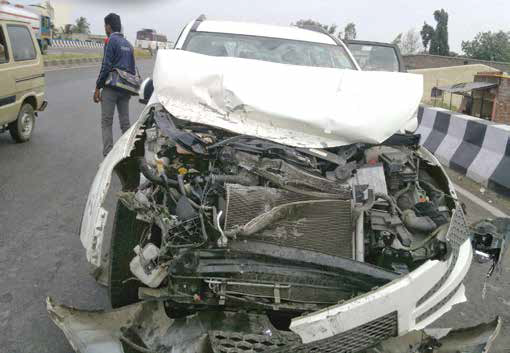Issue No.2 / Dec 1,2014

This is the backdrop against which I am recounting the details of a car crash which my wife and I survived recently. Given that advent of modern cars coincided with attempts to upgrade the quality of National highways and Expressways, the opportunity to exceed an average speed of 80 kms on these newly built surfaces became a reality. While the ability to traverse distances in comparatively shorter duration became a reality, a whole host of attendant facilities coupled with the need to educate the semi-literate user on the repercussions of high speed traffic, were perhaps not pursued with equal vigour. Safety features in all walks of life in India, be it construction, transportation and industry, are far from meeting well documented and mandatory features enforced by advanced countries of the West. It is thus not unusual to see inadequate sign boards/ warning signals/signs, incomplete safety barriers to prevent human and animal encroachment on high speed corridors, unauthorised traffic of two wheeler, four wheelers and tractors in the wrong lane (often heading the wrong way) and inability to hold highway authorities accountable for dangerous diversions and unlit stretches of potentially high risk accident prone zones. Viewed from the ever increasing density of population bordering on intercity motorways and unregulated settlement of colonies, we are poised on the threshold of serious conflict of interest posed by human/animal and environmental issues.
For a country which has witnessed unprecedented growth of motor vehicles but not enough infrastructure development, strict adherence to rules of the road and close monitoring to check indiscipline, should be a very high priority activity. That it is not so is known to all. The chances of encountering an unlicensed driver at the wheels of a truck or load carrier and vehicles with poor material state are very high, if not real.
By Suresh Bangara